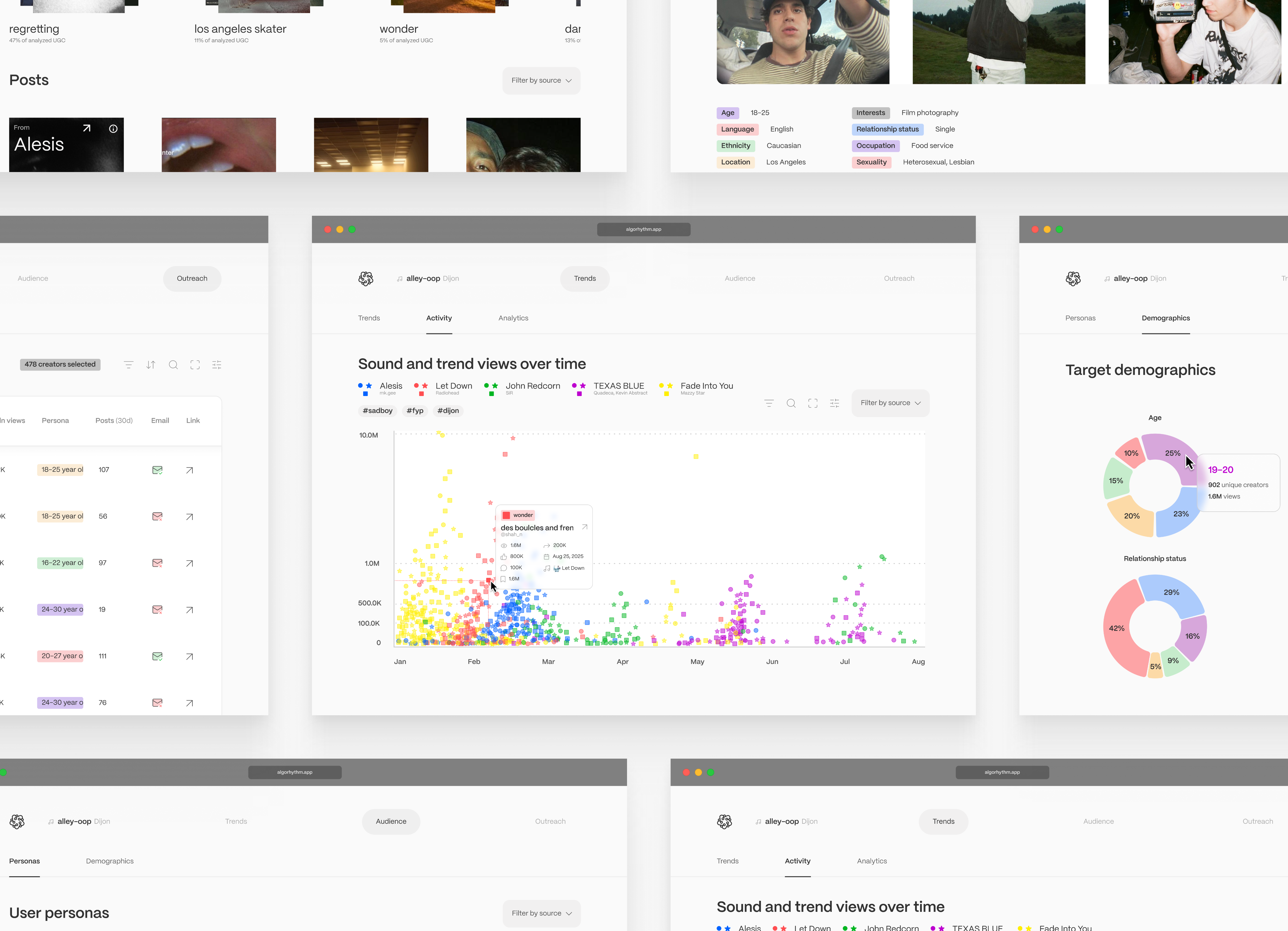
Algorhythm
Founding Designer, 2025-present
Building and designing an LLM powered music marketing strategy platform.
Timeline
Jul 2025
Role
Founding Designer
Team
Zach Meyer (Founder)
Olivia Nazari (Designer)
Clients
Sony AWAL
Warner Music UK
Universal Music Group
Tools
Figma
Illustrator
Notion
Discord
Defining the Problem
Music marketing teams misallocate 80% of their budget due to poor targeting and unclear performance data. Moreover, building authentic relationships with consumers on social media is harder than ever.
We needed to gather key social media data, curate content for marketing teams, and reduce research time drastically. Goals of the project were as follows:
- Achieve clarity and create a free-feeling creator platform that highlighted the user’s visual content
- Inform the user with digestible quantitative data
Primary Challenge
Algorhythm’s intended users were not tech savvy or experienced with social media use. They were instead music marketers.
Therefore we needed to build an interface that was powerful and maintained a clear user flow.
Establishing a Brand Identity
Our team brainstormed values and adjectives that we wanted to embody in all aspects of our design. This included:
- Modern
- Professional
- Creativity and expression
- Experimental
We used these descriptors as our thesis that would structure our design system henceforth.
User Flow
Users are taken through the platform emulating that of a real marketing campaign.

Iterations
9 rounds of iterations were conducted, each directly in response to complaints from clients. Initial iterations were focused on establishing layout and V0 features. Mid-round iterations integrated brand identity, styling, and additional features requested by stakeholders. Final iterations prioritized tightening user flow and ensuring functionality.
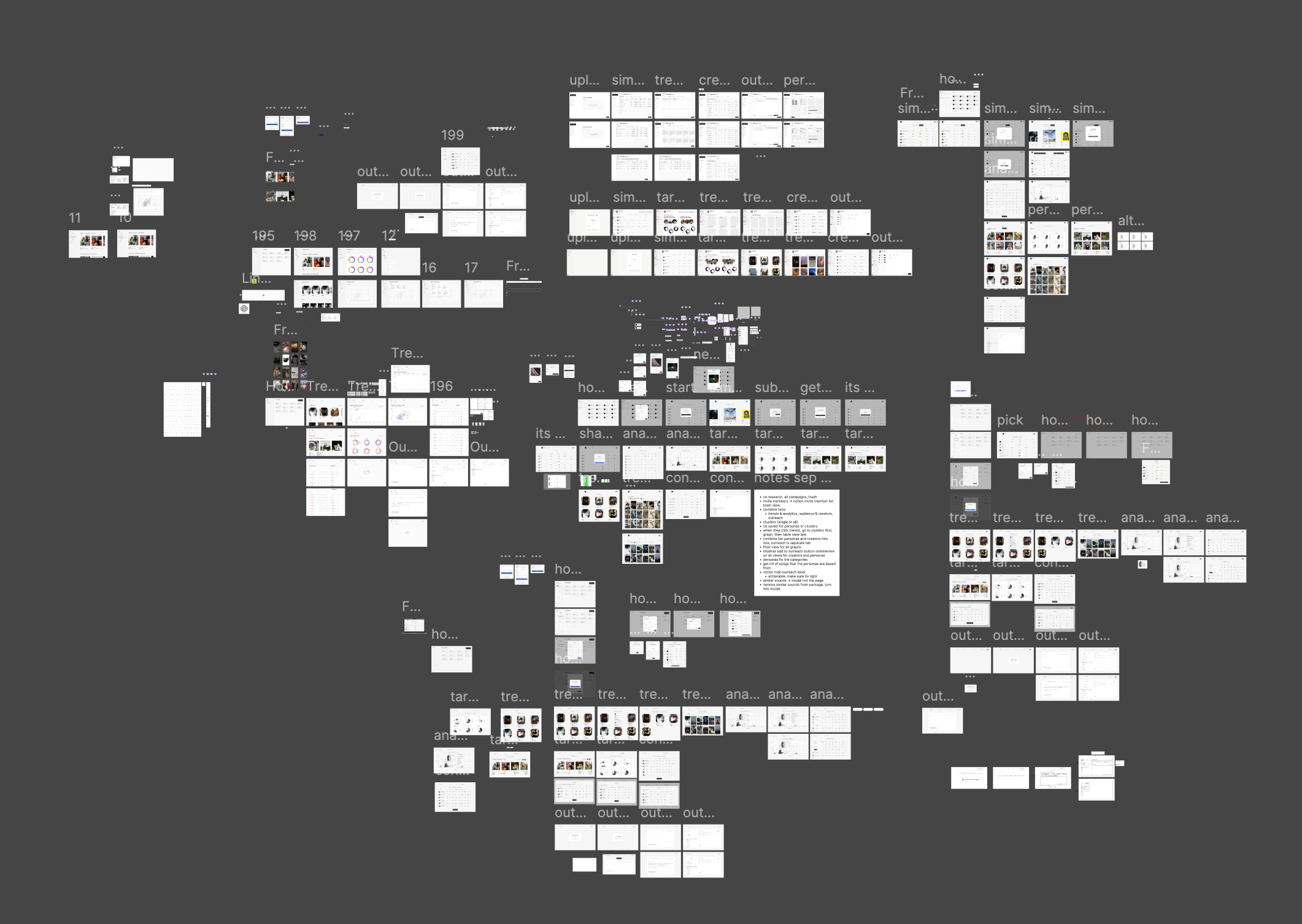
Creating a Component Library
Due to the nature of the product, components ended up being very complex. Components were therefore seperated by

Interfaces
The primary product features are as follows:
- Trend across similar sounds
- Activity across similar sounds
- Analytics
- Audience persona
- Content creator outreach

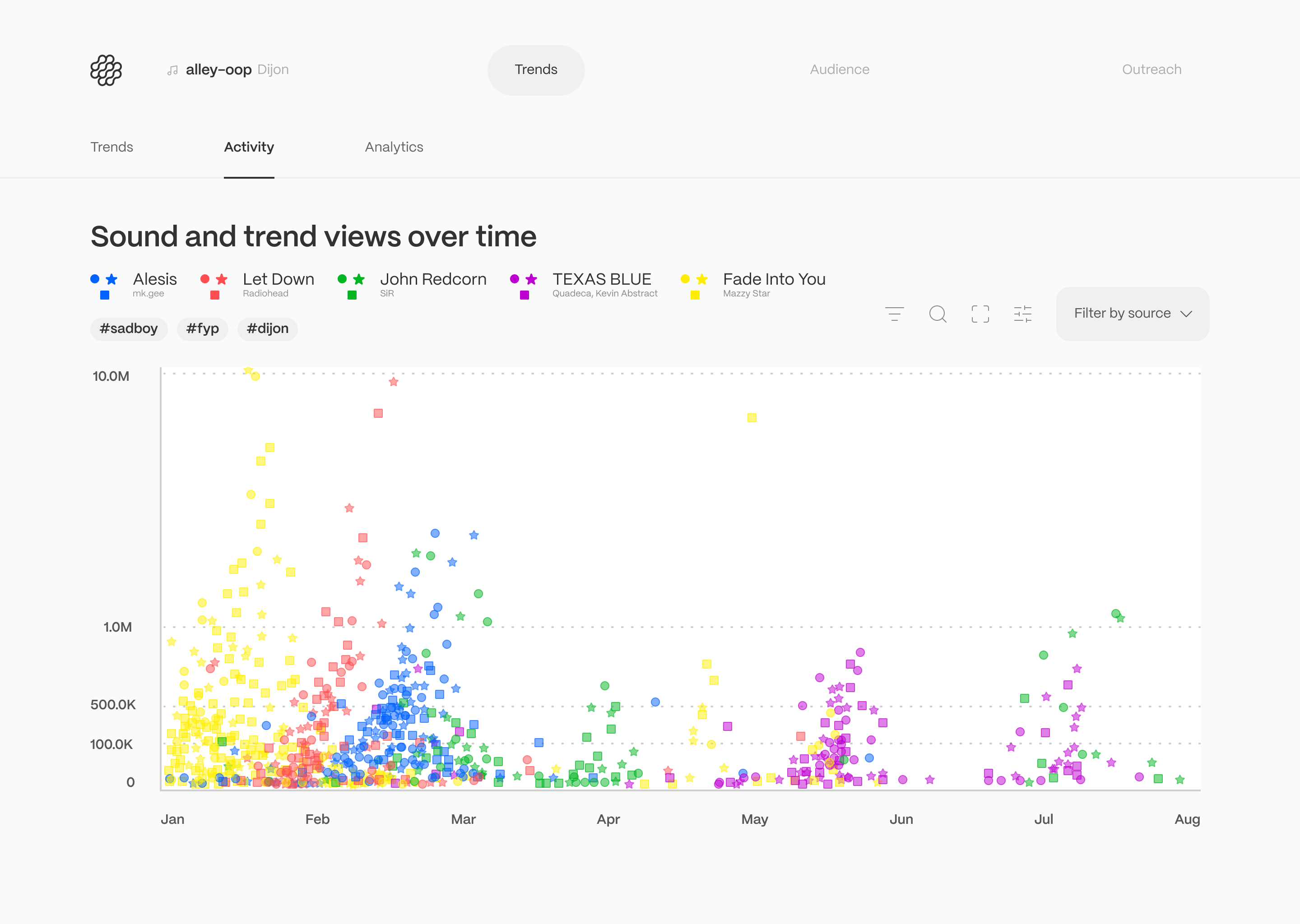
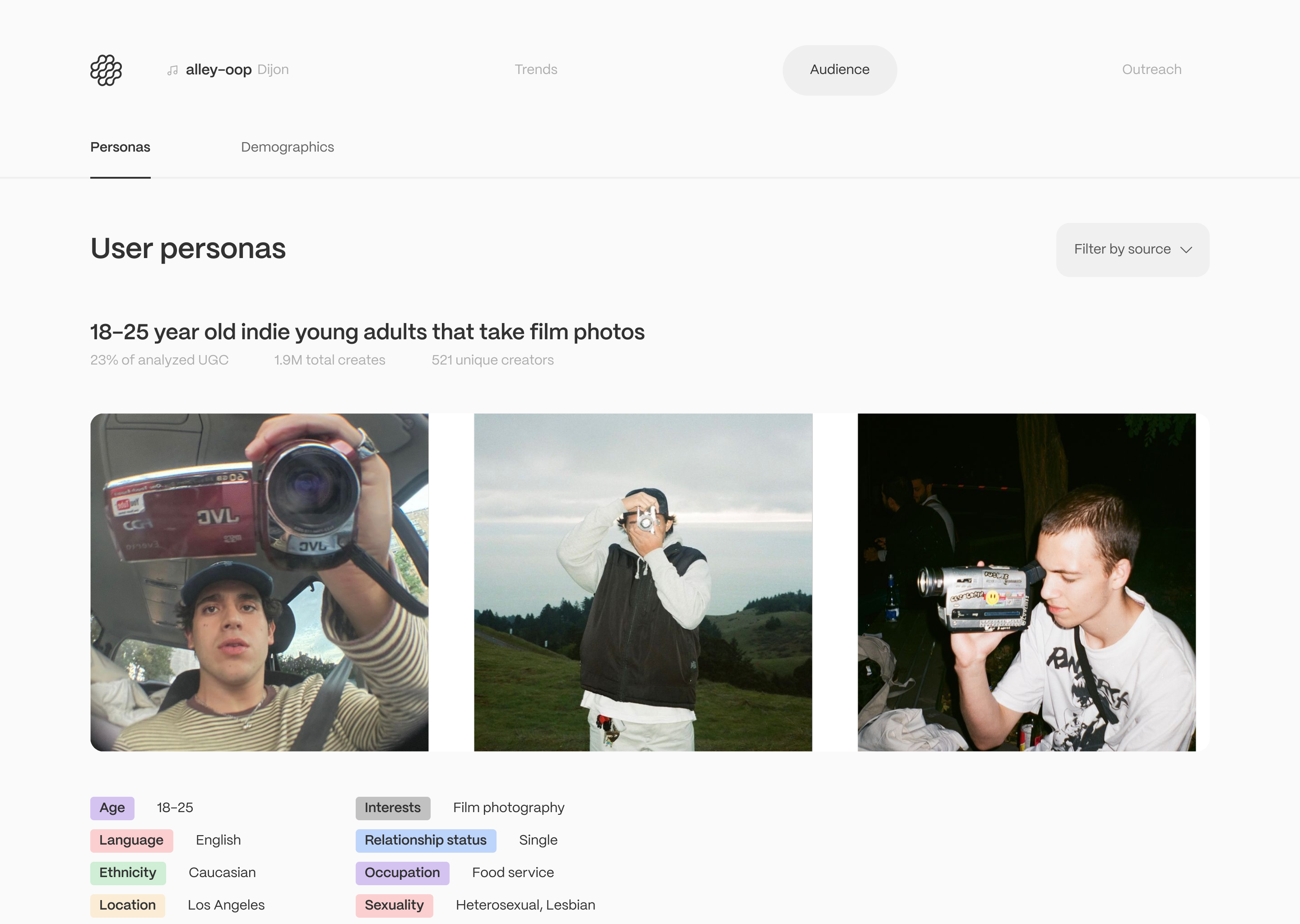

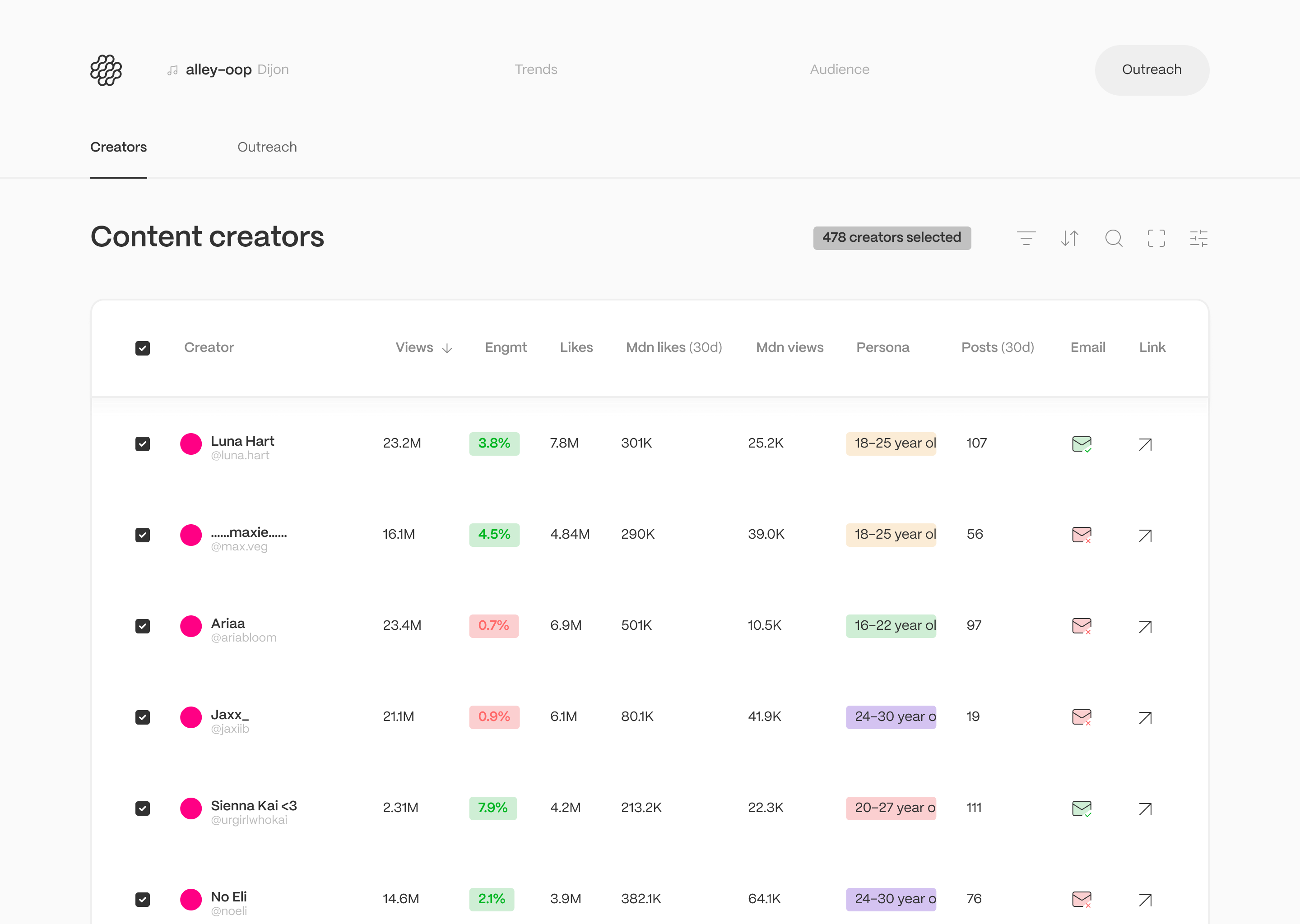
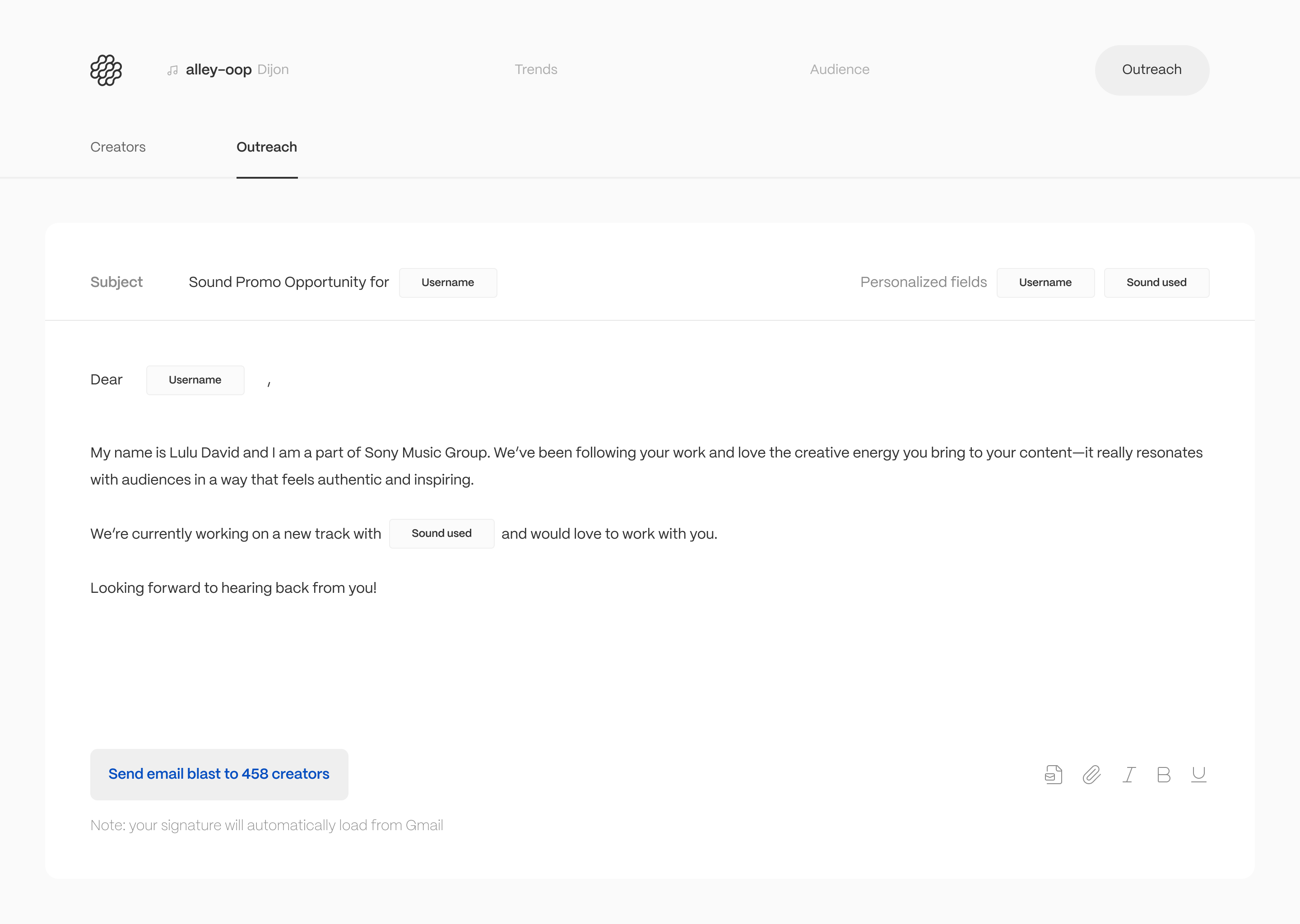

Testing and Validation
Stakeholder feedback was overwhelmingly positive. The interface and features garnered interest from investors and pushed us into funding round. Top music marketing companies waged to purchase an exclusive of our product.
In initial iterations, users complained about a sense of cognitive overload and a feeling of decision paralysis. Later iterations showed a large increase in understanding of interface and higher click rates (studied through PostHog).

Algorhythm
Founding Designer, 2025-present
Building and designing an LLM powered music marketing strategy platform.
Timeline
Jul 2025
Role
Founding Designer
Team
Zach Meyer (Founder)
Olivia Nazari (Designer)
Clients
Sony AWAL
Warner Music UK
Universal Music Group
Tools
Figma
Illustrator
Notion
Discord
Defining the Problem
Music marketing teams misallocate 80% of their budget due to poor targeting and unclear performance data. Moreover, building authentic relationships with consumers on social media is harder than ever.
We needed to gather key social media data, curate content for marketing teams, and reduce research time drastically. Goals of the project were as follows:
- Achieve clarity and create a free-feeling creator platform that highlighted the user’s visual content
- Inform the user with digestible quantitative data
Primary Challenge
Algorhythm’s intended users were not tech savvy or experienced with social media use. They were instead music marketers.
Therefore we needed to build an interface that was powerful and maintained a clear user flow.
Establishing a Brand Identity
Our team brainstormed values and adjectives that we wanted to embody in all aspects of our design. This included:
- Modern
- Professional
- Creativity and expression
- Experimental
We used these descriptors as our thesis that would structure our design system henceforth.
User Flow
Users are taken through the platform emulating that of a real marketing campaign.

Iterations
9 rounds of iterations were conducted, each directly in response to complaints from clients. Initial iterations were focused on establishing layout and V0 features. Mid-round iterations integrated brand identity, styling, and additional features requested by stakeholders. Final iterations prioritized tightening user flow and ensuring functionality.

Creating a Component Library
Due to the nature of the product, components ended up being very complex. Components were therefore seperated by

Interfaces
The primary product features are as follows:
- Trend across similar sounds
- Activity across similar sounds
- Analytics
- Audience persona
- Content creator outreach







Testing and Validation
Stakeholder feedback was overwhelmingly positive. The interface and features garnered interest from investors and pushed us into funding round. Top music marketing companies waged to purchase an exclusive of our product.
In initial iterations, users complained about a sense of cognitive overload and a feeling of decision paralysis. Later iterations showed a large increase in understanding of interface and higher click rates (studied through PostHog).

Algorhythm
Founding Designer, 2025-present
Building and designing an LLM powered music marketing strategy platform.
Timeline
Jul 2025
Role
Founding Designer
Team
Zach Meyer (Founder)
Olivia Nazari (Designer)
Clients
Sony AWAL
Warner Music UK
Universal Music Group
Tools
Figma
Illustrator
Notion
Discord
Defining the Problem
Music marketing teams misallocate 80% of their budget due to poor targeting and unclear performance data. Moreover, building authentic relationships with consumers on social media is harder than ever.
We needed to gather key social media data, curate content for marketing teams, and reduce research time drastically. Goals of the project were as follows:
- Achieve clarity and create a free-feeling creator platform that highlighted the user’s visual content
- Inform the user with digestible quantitative data
Primary Challenge
Algorhythm’s intended users were not tech savvy or experienced with social media use. They were instead music marketers.
Therefore we needed to build an interface that was powerful and maintained a clear user flow.
Establishing a Brand Identity
Our team brainstormed values and adjectives that we wanted to embody in all aspects of our design. This included:
- Modern
- Professional
- Creativity and expression
- Experimental
We used these descriptors as our thesis that would structure our design system henceforth.
User Flow
Users are taken through the platform emulating that of a real marketing campaign.

Iterations
9 rounds of iterations were conducted, each directly in response to complaints from clients. Initial iterations were focused on establishing layout and V0 features. Mid-round iterations integrated brand identity, styling, and additional features requested by stakeholders. Final iterations prioritized tightening user flow and ensuring functionality.

Creating a Component Library
Due to the nature of the product, components ended up being very complex and included a multitude of variations. Components were therefore separated by degrees of variations.

Interfaces
The primary product features are as follows:
- Trend across similar sounds
- Activity across similar sounds
- Analytics
- Audience persona
- Content creator outreach







Testing and Validation
Stakeholder feedback was overwhelmingly positive. The interface and features garnered interest from investors and pushed us into funding round. Top music marketing companies waged to purchase an exclusive of our product.
In initial iterations, users complained about a sense of cognitive overload and a feeling of decision paralysis. Later iterations showed a large increase in understanding of interface and higher click rates (studied through PostHog).